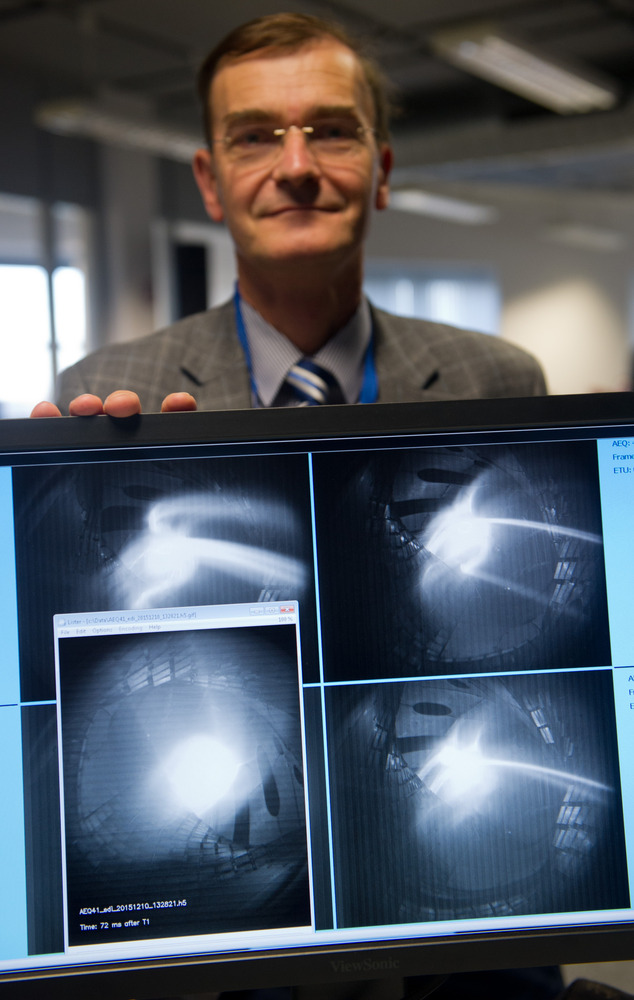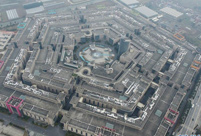


The first plasma created in Wendelstein 7-X is pictured. It consisted of helium and reached a temperature of about 1 million°C. Over the coming years W7-X, which isn't designed to produce any energy itself, will test the extreme conditions such devices will be subjected to if they are ever to generate power

Technical director Hans-Stephan Bosch holds up computer images showing the first plasma generated at the 'Wendelstein 7-X' nuclear fusion research centre at the Max Planck Institute for Plasma Physics in December
Over the coming years W7-X, which isn't designed to produce any energy itself, will test many of the extreme conditions such devices will be subjected to if they are ever to generate power, said John Jelonnek, a physicist at the Karlsruhe Institute of Technology, Germany.
Jelonnek's team is responsible for a key component of the device, the massive microwave ovens that will turn hydrogen into plasma, eventually reaching 100 million °C.
Compared to nuclear fission, which produces huge amounts of radioactive material that will be around for thousands of years, the waste from nuclear fusion would be negligible, he said.
'It's a very clean source of power, the cleanest you could possibly wish for. We're not doing this for us, but for our children and grandchildren.'
 |
 Have you ever taken these beautiful subways in China?
Have you ever taken these beautiful subways in China? Chinese beauties, foreign models meet in Chengdu
Chinese beauties, foreign models meet in Chengdu Awesome! Aerial pictures taken on J-11 fighter
Awesome! Aerial pictures taken on J-11 fighter A foreign girl explains what China should be proud of
A foreign girl explains what China should be proud of Chinese navy's air-cushioned landing craft in pictures
Chinese navy's air-cushioned landing craft in pictures Chinese pole dancing master opens class in Tianjin
Chinese pole dancing master opens class in Tianjin Splendid Sichuan after snow
Splendid Sichuan after snow College girl of Vancouver crowned Miss Chinese Int'l 2016
College girl of Vancouver crowned Miss Chinese Int'l 2016 Pentagonal Mart becomes the largest vacant building in Shanghai
Pentagonal Mart becomes the largest vacant building in Shanghai Top 20 hottest women in the world in 2014
Top 20 hottest women in the world in 2014 Top 10 hardest languages to learn
Top 10 hardest languages to learn 10 Chinese female stars with most beautiful faces
10 Chinese female stars with most beautiful faces China’s Top 10 Unique Bridges, Highways and Roads
China’s Top 10 Unique Bridges, Highways and Roads Buying nianhuo!
Buying nianhuo! What Chinese try to sneak on flights (and how)
What Chinese try to sneak on flights (and how) Northeast authorities vow they will work to eradicate GM grains
Northeast authorities vow they will work to eradicate GM grains China’s richest village manages to transition away from old industries
China’s richest village manages to transition away from old industriesDay|Week